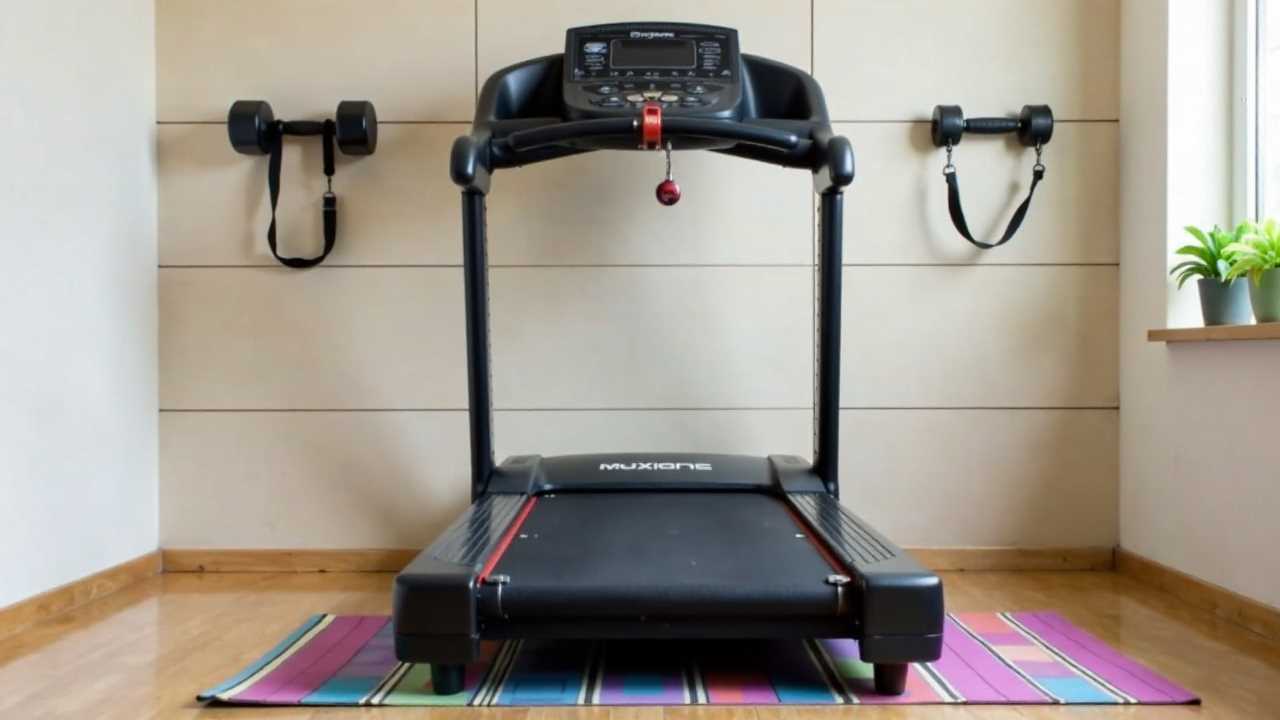Technology
How to Choose the Best Fitness Equipment for Small Spaces
Selecting the right fitness equipment for small spaces begins with measuring your workout area and ensuring at least three feet of clearance. Opt for

To choose the best fitness equipment for small spaces, start by measuring your workout area and verifying you have at least three feet around your equipment. Look for multi-functional, compact designs that are easy to store, like adjustable dumbbells or foldable exercise bikes. Prioritize durability and stability to guarantee safety during workouts. Incorporate versatile items like resistance bands for a range of exercises. Focus on efficient workouts, such as compound exercises or HIIT, to maximize your limited space. Investigate various options that meet these criteria to make the most of your fitness journey at home. More insights await you.
Understanding Your Space Requirements
In the context of selecting fitness equipment for small spaces, understanding your space requirements is essential. Start by measuring your workout area, taking into account both length and width.
Think about the height too, especially if you plan to use vertical equipment. You’ll want to leave enough room for movement, so aim for a clear space that’s at least three feet around your equipment.
Remember to evaluate furniture and other obstacles that may limit your options. Visualize how you’ll use the equipment; if you prefer high-energy workouts, a compact treadmill might be ideal.
On the other hand, if you like strength training, free weights or resistance bands could work better. Knowing your space helps you make informed decisions that keep your workouts efficient.
Essential Features to Consider
When you’re selecting fitness equipment for small spaces, it’s crucial to prioritize essential features that improve functionality without compromising your limited area.
Start by considering multi-functional equipment. Look for items that serve multiple purposes, like a bench that can be used for weight training and as a step platform.
Portability is another key feature; you’ll want equipment that’s easy to move and store.
Also, think about size; compact designs can fit neatly into corners or under beds.
Durability matters too, as you want to invest in equipment that withstands regular use.
Finally, check for stability; secure equipment guarantees safety during workouts.
Top Compact Fitness Equipment Options
For those maneuvering the challenges of limited space, selecting the right compact fitness equipment can make all the difference in your workout routine.
Consider investing in resistance bands; they’re versatile, lightweight, and can be easily stored. A set of adjustable dumbbells is another great option, allowing you to save space while still having a range of weights for various exercises.
A foldable exercise bike or a compact treadmill can also fit snugly into small areas, providing excellent cardio options.
Finally, a stability ball can improve core workouts and be deflated for easy storage.
Evaluating Equipment Performance
Evaluating the performance of your fitness equipment is essential to ensuring you get the most out of your workouts. You want to choose equipment that matches your fitness goals and fits your space effectively.
Here are some factors to take into account when evaluating performance:
- Stability: Does the equipment feel sturdy during use?
- Versatility: Can it accommodate different exercises or fitness levels?
- Ease of Use: Is it straightforward to set up and operate?
- Durability: Will it withstand regular use without breaking down?
- Comfort: Are the grips and surfaces comfortable for extended workouts?
Maximizing Workout Efficiency
Maximizing your workout efficiency is essential, especially in a small space where every minute counts. To make the most of your limited time, focus on compound exercises like squats, push-ups, and lunges that work multiple muscle groups simultaneously.
This approach not only saves time but also improves strength and endurance.
Consider implementing high-intensity interval training (HIIT) into your routine. This method alternates between short bursts of intense activity and rest, allowing you to burn calories quickly.
You’ll also want to keep your equipment versatile; resistance bands, dumbbells, or a stability ball can offer varied workouts without taking up much room.
Finally, plan your workouts ahead of time, ensuring you stay focused and make every moment count in your small space.
Frequently Asked Questions
Can I Use Regular Fitness Equipment in Small Spaces?
Yes, you can use regular fitness equipment in small spaces, but you’ll need to be creative with your layout. Consider multifunctional items or equipment that can be easily stored away when not in use.
How Do I Maintain Fitness Equipment in Tight Areas?
To maintain fitness equipment in tight areas, regularly clean and inspect it for wear. Keep your equipment dry and store it properly when not in use. This’ll extend its life and guarantee peak performance.
Are There Fitness Apps for Small Space Workouts?
In terms of fitness apps for small space workouts, you’ve got plenty of options. They offer tailored routines, making it easy to break a sweat without needing a gym. It’s a win-win for your fitness journey!
What Are the Best Storage Solutions for Compact Equipment?
When you’re considering storage solutions for compact equipment, think about wall-mounted racks, under-bed storage bins, or multi-functional furniture. These options maximize your space while keeping everything organized and easily accessible for your workouts.
How Much Should I Budget for Small Space Fitness Equipment?
Think of your budget as a garden; it needs careful tending. For small space fitness equipment, aim for $200 to $600. This range allows you to cultivate effective tools without overwhelming your wallet or space.

Hey there! I’m William Cooper, your go-to guy for all things travel at iMagazineDaily. I’m 39, living the dream in Oshkosh, WI, and I can’t get enough of exploring every corner of this amazing world. I’ve got this awesome gig where I blog about my travel escapades, and let me tell you, it’s never a dull moment! When I’m not busy typing away or editing some cool content, I’m out there in the city, living it up and tasting every crazy delicious thing I can find. Join me on this wild ride of adventures and stories, right here at iMagazineDaily. Trust me, it’s going to be a blast! 🌍✈️🍴







